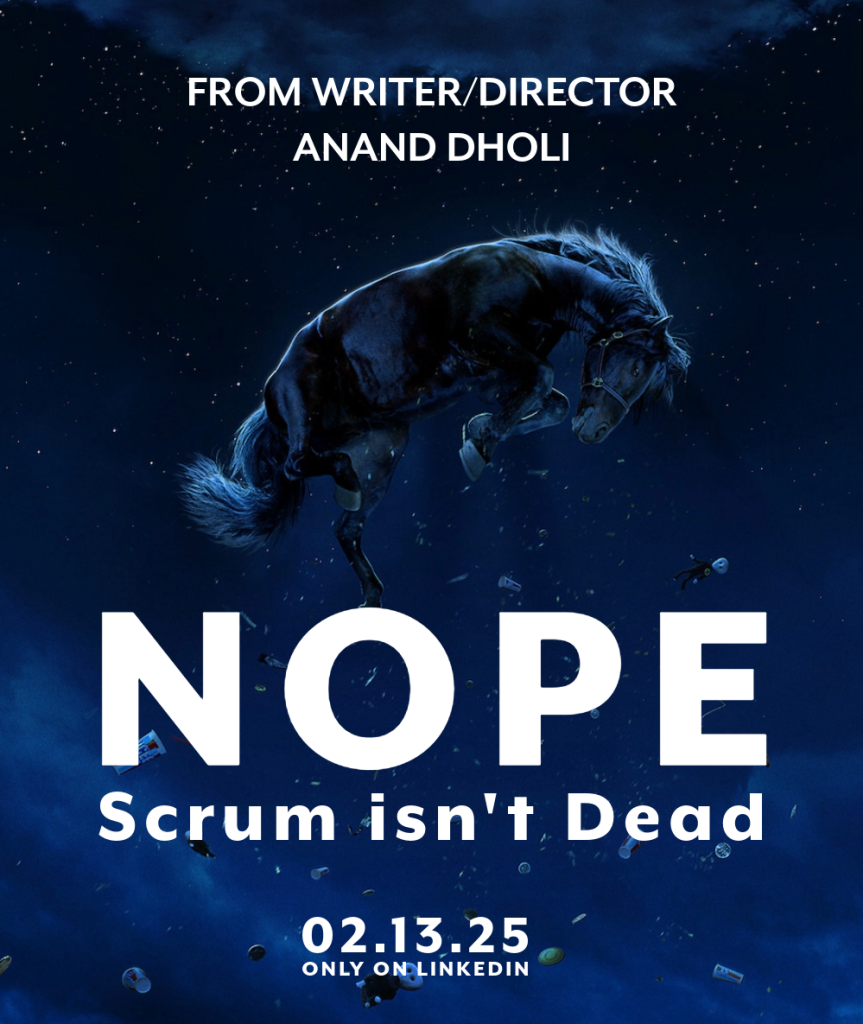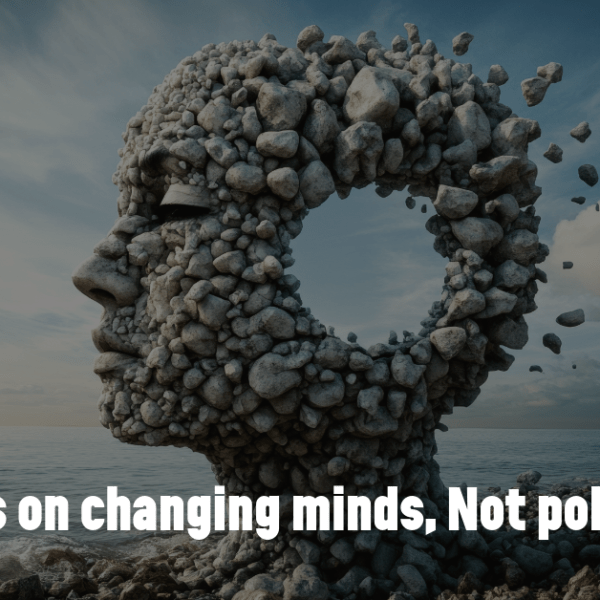
A dialogue from the movie NOPE goes like this:
What if I told you that today you’ll leave here different. I’m talking to you. Right here, you are going to witness an absolute spectacle. So what happens next? You ready? ARE YOU READY?
So, ARE YOU READY?
People love declaring the “death” of popular concepts. Scrum, the agile framework, is a frequent target.
Just like how democracy fails when people spread fake news and don’t care, or how religion gets a bad name because of some bad people, Scrum also looks like it’s failing when it’s not used properly. The real question isn’t “Is Scrum dead?”, but “Why isn’t Scrum working for your team?”
Think about it. Democracy doesn’t work if everyone’s just sharing forwards on WhatsApp without checking if they’re true. Religion gets spoiled by people who say one thing and do another. Doctors can’t do much if patients don’t take their medicines. Kids would rather play games on their phone than go out and play gilli-danda. These things aren’t bad by themselves, it’s just how we use them that makes the difference.
Same thing with Scrum. Saying Scrum is dead is too easy. Scrum is just a set of rules and ideas. It’s a tool, not a magic trick. Just giving someone a Scrum guide and expecting them to build a Taj Mahal is silly. They need training, experience, and the right materials.
So, why does Scrum sometimes “not work”? Here are a few reasons:
Misunderstanding the Fundamentals:

Scrum isn’t just about daily meetings and sprints. It’s about working step-by-step, working together, and always trying to improve. Teams that only do a few things from Scrum without understanding the main ideas will miss the whole point.
Lack of Commitment:

Scrum requires commitment from everyone involved, from the development team to the product owner to the stakeholders. If the team isn’t fully invested in the process, it’s doomed to fail. Everyone needs to be serious about Scrum.
Resistance to Change:

Scrum often means changing how we work. If people don’t want to change, even the best Scrum plan will fail.
Poor Product Ownership:

A weak or unclear product vision can derail any Scrum effort. The product owner needs to be empowered to make decisions and prioritize the backlog effectively. If the Product Owner doesn’t know what they want or can’t make decisions, Scrum will go nowhere.
Dysfunctional Team Dynamics:

Scrum thrives on collaboration and open communication. If the team is plagued by conflict, mistrust, or a lack of psychological safety, Scrum won’t magically fix those underlying issues.
Scrum needs teamwork and open talk. If there’s fighting, mistrust, or people are scared to speak up, Scrum can’t fix that.
Tool Overload:

Focusing too much on the Scrum tools and processes can make us forget the important things. Tools are there to help, not to become a burden.
Instead of yelling “Scrum is dead,” let’s look inwards. Let’s check our own tareeqas (methods) and ask ourselves these key questions:

Sach mein Agile values follow kar rahe hain? (Are we truly following Agile values?)
Scrum is built on Agile principles. These values – people and talks over tools and processes, working software over big documents, talking to the customer over contracts, and changing with the times over sticking to a plan – are the foundation of good agile work.
Are we really following these values, or just doing Scrum rituals without understanding the asli baat (real thing)?
Are we focusing on teamwork and working software, or are we stuck with rigid processes and too much paperwork?
Just doing Scrum without understanding Agile values is like putting a fancy engine in a kharab (broken) car – it might look good, but it won’t go far.
Hamesha behtar banne ki koshish kar rahe hain? (Are we always trying to improve?)
Continuous improvement is super important in Scrum. Retrospectives aren’t just a formality; they’re a chance for serious soch-vichar (reflection) and vikas (growth). [By the way, the word “VIKAS” is heavily used in India these days. Pun intended]
Are we honestly looking at our work, finding problems, and making changes to get better?
Are we building a culture of learning and trying new things, where mistakes are seen as seekhne ka mauka (opportunity to learn)? Or are we stuck in the same groove, repeating the same galti (mistakes) and blaming Scrum for our lack of taraqqi (progress)?
A team that doesn’t want to change or improve will struggle with any method, including Scrum.
Aapas mein khul ke baat karte hain aur saath mein kaam karte hain? (Do we talk openly and work together well?)
Scrum needs communication and teamwork.
Are we creating a safe jagah (place) for team members to share their ideas, problems, and feedback freely?
Are we really listening to each other and respecting everyone? Or are we full of misunderstandings, ego clashes, and no one trusts anyone?
A team that doesn’t talk properly will find it hard to work together, and without teamwork, Scrum’s power is greatly reduced.
Kya banana hai, pata hai aur Product Owner bhi sahi hai? (Do we know what to build, and do we have a good Product Owner?)
A clear vision for the product is very important for Scrum to work.
The Product Owner is key in deciding and prioritizing what to build, making sure the team is working on the most valuable cheezein (things).
Is our Product Owner empowered to make decisions and tell the team clearly what the product should be?
Or are they confused with too many priorities, no power, or a vague idea of what the customer wants? A weak or unclear product vision will surely lead to a messy and unproductive Scrum process.
Team mein jo problems hain, unko solve kar rahe hain? (Are we solving the problems in our team that are stopping us?)
Scrum can show the problems in a team, but it can’t magically fix them.
Are we solving the real issues that are stopping us, like lack of trust, fights, or missing skills?
Are we giving our team the support and resources they need to succeed? Or are we just blaming Scrum for problems that were there before? Ignoring these issues will ruin any try to use Scrum properly.
Scrum, like any tool, is only as good as the log (people) using it.
It’s not a jadoo ki chadi (magic wand) that will turn a bad team into a great one. Instead of blaming the framework for our failures, we need to seriously look at our own ways of working and ask ourselves these tough questions.
By honestly answering these questions, we can move past the “Scrum is dead” rona (crying) and focus on building a good environment where Scrum can truly shine.
Tabhi, aur sirf tabhi (then, and only then), we’ll see the real power of Scrum and hear more stories of its amazing kamyabi (success).


